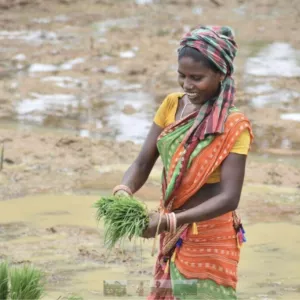Healthier harvests: How Odisha is leading the way by mainstreaming nutritious rice
Government-led policies are propelling Odisha’s journey toward nutrition-sensitive agriculture Edited by Ankita Tiwari India’s nutrition challenge India, despite being one of the world’s largest producers of rice, continues to grapple with serious nutrition challenges. According to the latest National Family Health Survey (NFHS-5), 36% of children under five are stunted, 19% are wasted, and 32% are underweight. Anaemia is rising

Healthier harvests: How Odisha is leading the way by mainstreaming nutritious rice
Government-led policies are propelling Odisha’s journey toward nutrition-sensitive agriculture
Edited by Ankita Tiwari
India’s nutrition challenge
India, despite being one of the world’s largest producers of rice, continues to grapple with serious nutrition challenges. According to the latest National Family Health Survey (NFHS-5), 36% of children under five are stunted, 19% are wasted, and 32% are underweight. Anaemia is rising sharply, affecting nearly 67% of children and more than half of women. At the same time, lifestyle-related conditions such as diabetes are escalating, with more than 101 million Indians living with diabetes and another 136 million in a pre-diabetic state.
This dual burden of malnutrition and non-communicable diseases represents one of the biggest public health challenges of our time.
Odisha has made steady progress in nutritional outcomes over the years, supported by persistent interventions and enabling policies. Between NFHS-4 and NFHS-5, encouraging improvements can be observed, showing that efforts are moving in the right direction. At the same time, further attention is needed to strengthen nutritional security, particularly around key areas such as stunting, wasting, and anaemia in children. Among adults, 20.8% of women and 15.3% of men have low BMI, and rising blood sugar levels highlight an area to watch closely as lifestyle-related diseases grow across India. With 83% of the state’s population living in rural areas and rice consumed at least twice a day as both a staple food and a cultural cornerstone, enhancing nutrition through rice—alongside other complementary interventions—represents a practical and necessary opportunity for lasting impact.

